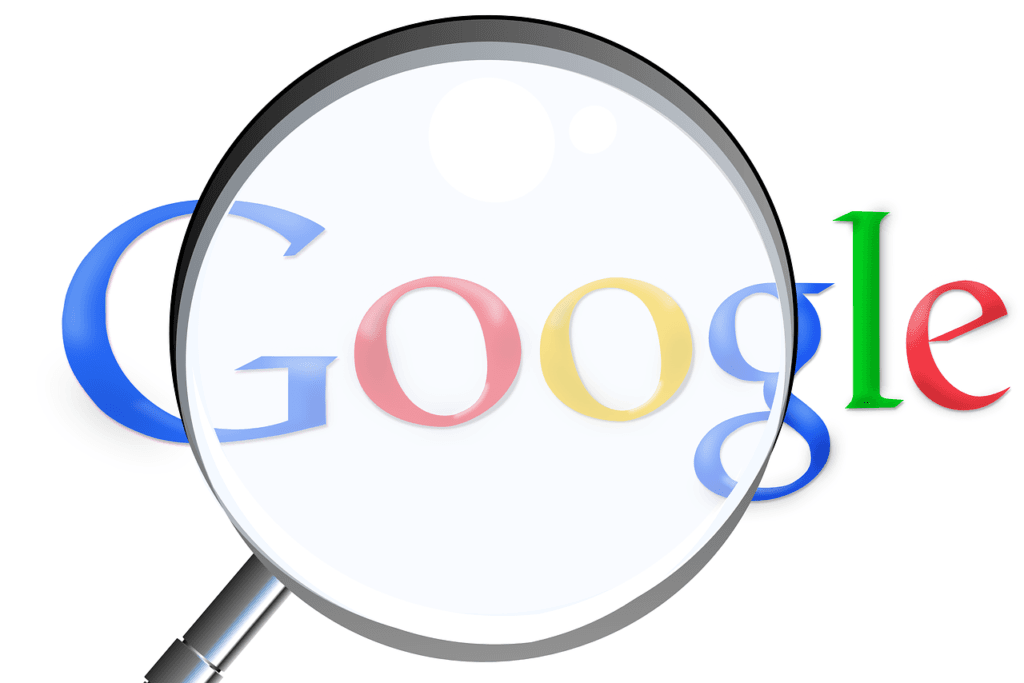Importance of Customer Experience
I’ve taken a deep dive into the world of customer experience (CX), and let me tell you, it’s like finding gold when it comes to boosting revenue and slashing costs. If businesses want to stay in the game, they gotta make sure their customer experience is top-notch.
Revenue Increase through CX
Making the customer experience better can lead to some serious money rolling in. The Temkin Group points out that companies can rake in an extra $823 million over three years for every $1 billion in annual revenue by focusing on CX (Qualtrics). That kind of cash potential should make any business sit up and pay attention.
Check out this breakdown showing how revenue can rise with different levels of CX improvement:
| CX Improvement Level | Potential Revenue Boost (3 Years) |
|---|---|
| Just a Bit Better | $100 million |
| Pretty Good Better | $400 million |
| Totally Awesome Better | $823 million |
Companies that really go all-in on CX also enjoy profits that are a hefty 60% higher than those who don’t give it much thought. So clearly, making CX part of your business DNA is a no-brainer.
Cost Reduction with Improved CX
On top of raking in more revenue, upping your CX game means you’re gonna cut costs, too. When the experience gets smoother, expect fewer hiccups and more efficient operations, especially in customer service (Qualtrics). Getting rid of mishaps and bad service experiences is key.
Here’s how improved CX impacts your expenses:
| Type of Expense | Savings with Good CX |
|---|---|
| Cost to Serve | Can drop by 20% |
| Customer Support Costs | Can shrink by 15-25% |
| Churn-Related Expenses | Can drop by 30% |
Also, about $62 billion goes down the drain every year thanks to terrible customer service (SuperOffice). That’s a whole lot of cash businesses are losing out on. By focusing on what customers really want and expect, companies can dodge these losses and beef up their profits.
It’s pretty clear that investing in CX isn’t just a way to improve; it’s a must-do strategy for businesses looking to crank up revenue while slimming down costs. Incorporating strong customer experience management could very well be the ticket to long-lasting success.
Impact of Employee Engagement
Managerial Influence on Engagement
You’ve probably heard the old saying, “Happy employees make happy customers.” Well, it’s true. How managers interact with their team is like a domino effect. If employees feel sidelined or ignored, guess what? They aren’t going to do a happy dance heading into work. Studies suggest that disengaged employees double up when managers turn a blind eye (Qualtrics). It’s not rocket science, folks: grumpy workers mean grumpy service.
But on the flip side, when management is all about being empathetic and supportive, magic starts happening. Employees feel noticed and motivated, which leads them to sprinkle their fairy dust on customer service. It’s almost like everyone wakes up and decides to be a customer’s superhero for the day. The trick is to make sure employees are pumped up enough to hit those customer expectation highs.
| Engagement Factor | Employee Impact |
|---|---|
| Feeling listened to | Lower grumble levels |
| Manager backing | Productivity boost |
| Understanding employee vibes | Better service vibes |
Now, let’s get real. Folks want to feel a human touch in their customer service, like someone’s genuinely got their back. In the U.S., about 82% of people crave that personal interaction, and it’s a bit less worldwide at 74%. But the disconnect is real—only 38% of U.S. consumers think anyone actually gets their wants and needs. Managers, you’ve got your work cut out for you! It’s about loading up your crew with the right skills and smarts to deliver what customers are asking for.
To take employee engagement to the next level, here’s my two cents:
- Regular Feedback Sessions: Keep those lines open. Make it easy for employees to chat about what’s not sitting right with them.
- Training Programs: Throw some effort into customer experience training so the team knows their stuff.
- Recognition and Rewards: Give folks a pat on the back. Shout out their hard work to keep them fired up and focused on smashing those customer goals.
Focusing on engagement means you’re setting the stage for a workforce that’s all-in and pumped. It’s a win-win, really. When your team’s thriving, your customers feel the love too, and that’s where business hits its stride. Getting to grips with how much a manager’s touch lifts employee spirits, and in turn customer optimism, is at the heart of building a killer customer experience strategy. That balance is the secret sauce no one can afford to skip on.
Personalization in CX
So, let’s talk about adding that special touch in how businesses interact with you and me. We’re in a marketplace where everyone wants to feel special, and you can bet that personalization holds the key to winning hearts and grabbing wallets.
Influence on Consumer Behavior
Look, if I get a message saying, “Hey, look at this thing specially picked for you,” my curiosity is immediately piqued. It turns out 80% of people are on that same wave, more likely to hit “buy now” when brands speak directly to them (Qualtrics). When companies tune in and know just when to pop up in our notifications, 81% of us appreciate it and want more of it.
In my experience, businesses should lean on data like it’s their best buddy, crafting everything from ads to chats that hit the right note at the right time. Getting this right means turning casual visitors into loyal friends, who keep coming back for more.
| Stat Fun Fact | Why It Matters |
|---|---|
| 80% like personal vibes | More folks are buying |
| 81% want you to “get” them | Better engagement with a smile |
Importance of Understanding Customers
Diving into customer world isn’t just about what they put in their shopping carts. It’s about genuinely knowing your people—their dreams, quirks, and what makes them tick. When a brand gets this down, they’re onto something magical, creating experiences that hit home.
And get this: folks are willing to splurge up to 60% more if they believe the experience is fantastic (Qualaroo). Basically, if you tailor those interactions right, customers will adore you and maybe even shoutout your brand to everyone they know.
Don’t just take my word for it. Take Tesla, for example; they’re not shy about drawing on customer feedback. Those weekly feedback loops result in quick tweaks and turns in the production line, and let’s face it, they seem to know what they’re doing.
The secret sauce here is in the personal touch. Get it right, and positive reviews and chatter will naturally flow your way (Content Square). So, if you’re a brand that values really understanding customers’ inner workings, you’re likely to see thriving success. Curious for more? Check out our thoughts on customer experience strategies and tips on improving customer experience.
Customer Feedback Strategies
Trying to keep the customers happy and loyal is like learning to ride a unicycle on a tightrope – essential, yet not easy. Just ask Amazon and Apple, two big names playing the feedback game to keep folks smiling and sticking around.
Amazon’s Customer-Centric Approach
Amazon’s all about giving the people what they want, understanding that a happy shopper keeps the cash register buzzing. They’ve got this whole feedback circus going on, roping in thoughts from everyone through product reviews, seller insights, and delivery comments. Jeff Bezos, the man with the plan over there, is convinced that when customers are at the heart of the show, the profits follow on a tightrope of their own (Rapidr).
Tuning into what folks think helps Amazon tweak their offerings, smoothen those operations, and deliver stuff people actually want to buy. Feedback is the secret sauce that keeps their customer experience strategy spicy and satisfying, fixing problems before they become big enough to ruin the show.
| Feedback Channel | Purpose |
|---|---|
| Product Reviews | Pinpoints what’s hot and what’s not |
| Seller Feedback | Checks if sellers are playing nice |
| Delivery Feedback | Keeps the delivery speedy and the customers happy |
Apple’s Utilization of NPS Surveys
Apple, on the other hand, works its magic with these nifty Net Promoter Score (NPS) surveys. These handy tools tell them how likely a person is to rave about their latest iGadget to buddies. It’s like having a mental map of loyal followers, giving clues on who’s singing praises and who’s grumbling (Rapidr).
Digging into this data, Apple discovers where they can sprinkle a little more Apple dust to improve everything from storefronts to gadgets. Making sense of these scores helps decide which new tricks need to be pulled out of the hat to keep the audience enchanted and coming back for more fun digital customer experience.
| NPS Survey Aspect | Importance |
|---|---|
| Customer Loyalty | Tracks cheerleaders for the brand |
| Product Feedback | Guides inventing tomorrow’s must-have gadget |
| Service Quality | Assures the store visit is as smooth as a new iPhone screen |
Borrowing a page from the playbooks of Amazon and Apple shows that listening closely to customers is no sideshow—it’s the main event. Whether it’s Amazon’s swift delivery updates or Apple’s gadget buzz, taking in what customers say draws them back into the big top for more. Using such strategies means the show goes on, gaining applause through each discovery in customer experience measurement and improving customer experience.
Making the Most of Customer Feedback
Ever wondered how big names like Uber and Netflix keep raising the bar? It’s all about tapping into what customers have to say. By really listening, these powerhouses make everything just that bit better.
Uber’s Smart Moves
Think of Uber as that savvy friend who’s always asking, “How can I make this better?” They’ve got this knack for getting feedback, right from the app itself. So, when you rate your ride or leave a comment, Uber’s taking notes. That’s what keeps the app user-friendly and matches you with the right driver, all while raising the overall service vibes.
After every ride, Uber checks out those ratings and comments. Need the app to be less like navigating a maze? Done. Want the ride-matching to feel more like a matchmaking service? They’ve got that covered, too. It’s this feedback loop that Uber spins into gold, making sure users step out of a ride feeling satisfied. Curious about how this all fits into the bigger picture? Peek at our take on customer journey mapping.
| What’s Checked | What Gets Better |
|---|---|
| App interface | Smoother to use and enjoy |
| Ride matching | Quicker and more efficient rides |
| Overall service | Happy users coming back for more |
Netflix Plays to Win
Over at Netflix HQ, they’ve got a thing for surveys and feedback chats. This isn’t just for fun—they’re tuning their content choices and making sure that the “Suggested for You” list doesn’t miss a beat. By diving into what viewers love, Netflix crafts a viewing party that fans can’t resist.
This all-about-you approach means their show and movie picks are on point. What you see feels like it was handpicked just for you, boosting both your happiness and your binge-watching stats. Want more tips on keeping customers smiling? Check out our chat on customer experience management.
| What’s Checked | What Gets Better |
|---|---|
| Content choices | Matches what you want to watch |
| Recommendations | Nailed your taste to a tee |
| App navigation | Clean and easy to browse |
In the game of customer feedback, Uber and Netflix show us how it’s done. They’re constantly tweaking, polishing, and leveling up to make sure users stick around while smiling all the while. Eager for a few tricks of your own? Pop over to our piece on improving customer experience for more insights.
Focus on Customer-Centric Metrics
If you’re aiming to make your mark with a killer customer experience platform, you’re gonna wanna get cozy with those customer-centric metrics. We’re talking things like Net Promoter Score (NPS) and daily active users. These bad boys give you a front-row seat to how satisfied and engaged your customers actually are.
Slack’s Approach to Happy Users
If there’s one company that seems to absolutely nail the whole “val’uing customer feedback” thing, it’s Slack. They’re all about tapping into their users’ vibes, tweaking those features, and just making everything flow smoother. It’s a classic cycle—listen, adjust, improve, repeat. Thanks to those trusty metrics like NPS and daily active users, Slack has managed to keep users hooked and happy as clams for the long haul. Rapidr has some solid details on how this style really digs into user needs so you can keep that momentum rolling.
| Metric | Why it Matters |
|---|---|
| Net Promoter Score (NPS) | Tells you if folks are gonna talk you up or not |
| Daily Active Users | Shows who’s jammin’ on your platform regularly |
Why NPS and Daily Users Are Big Deals
So, what’s the big deal with NPS and those daily active users “numbers”? NPS is like your magic meter for loyalty. It gives you a heads-up if folks are likely to drop your name in a good way. Then you got your daily active users, which is basically a pulse check on how much your service is a staple in their day-to-day.
Measuring customer experience doesn’t end there. You got other tech like the Customer Effort Score (CES), Customer Satisfaction Score (CSAT), and Time to Resolution (TTR) up your sleeve. These tools all work together to see how your biz is meeting customer needs and smoothing out any rough edges in their journey, as pointed out by Content Square’s research.
Putting your money where your metrics are can seriously pay off. Picture this: 86% of buyers are itching to shell out extra cash for experiences that hit the sweet spot. Tuning into customer-centered metrics not only ramps up satisfaction but also gets folks coming back for more and spreading the gospel of your awesomeness. Craving more on upping your customer game? Dive into our guide on improving customer experience.
Measuring Customer Experience
I’ve gotta keep track of how my customers feel to make sure I’m doing a bang-up job. It’s not just about good vibes—understanding their satisfaction helps pin down where I can up my game. Two simple ways to do this are firing off surveys and delving into Net Promoter Score (NPS), all while soaking up every bit of feedback they toss my way.
Surveys and NPS Analysis
Surveys are like peeking into my customers’ minds. They spill the beans on how they find my stuff—good, bad, or somewhere in between. A mix of straightforward questions with those neat scales alongside open-ended ones? That’s the secret sauce to get both numbers and juicy details.
Meanwhile, NPS analysis is my go-to for figuring out who’s singing my praises and who’s got gripes. That golden question, “On a scale from 0 to 10, how likely are you to recommend our product/service?” does the trick. Here’s how the scores shake out:
| NPS Score | Customer Category |
|---|---|
| 0 – 6 | Detractors |
| 7 – 8 | Passives |
| 9 – 10 | Promoters |
Promoters are basically my cheerleaders, while detractors? Their bad vibes could throw a wrench in the works. Watching these numbers over time lets me measure how my customer experience strategy tweaks are paying off. Sometimes, you gotta switch things up.
Significance of User Feedback
Then there’s user feedback—what a game changer! People will shell out up to 60% more for something that wows them. That’s a massive nod to the power of great experience (Qualaroo). Take Tesla, for instance; they’re all ears, constantly feeding customer ideas into their weekly updates. Their approach is a blueprint for success.
On top of that, throwing AI chatbots into the mix whizzes up feedback collection. The tech’s on the rise; 71% of businesses are ready to splash more cash here for customer service, tapping into AI for a smoother digital customer experience (HubSpot).
Figuring out the customer experience isn’t just checking a box—it’s about gearing up my tactics to really meet my customers’ wants and needs. For a clearer picture on amping up customer interactions, diving into customer experience analytics can shine a light on the path forward.
Trends in Customer Experience
Growing Investment in CX
You know what’s catching my eye these days? Businesses ramping up their spending on Customer Experience (CX). More than 45% of companies are throwing more bucks into CX this year, up from the 36% back in 2010 (hat tip to SuperOffice). Why? They’ve finally realized that putting money into CX isn’t just splurging. It’s like planting a money tree—your revenues just grow!
Take the Temkin Group’s word for it: big firms raking in a cool billion a year could pocket an extra $700 million over three years just by getting serious about CX. And if you’re in the Software as a Service (SaaS) game, those returns could swell to a whopping billion. Not too shabby, right?
| Year | Percentage of Organizations Investing in CX |
|---|---|
| 2010 | 36% |
| 2023 | 45% |
Customer Willingness to Pay for Enhanced Experience
Here’s another juicy tidbit I’ve got for you—folks don’t mind opening up their wallets for a killer customer experience. Some 86% of buyers wouldn’t flinch at dropping more cash if they get treated to a top-notch experience. This isn’t just for show—it hits your profits straight.
Picture this: people are willing to part with 13% more on average for a better experience. Go upscale with luxury services, and they’ll stretch that to 18%! That’s not just revenue, folks; that’s nostalgia in action. Loyal customers? Check!
| Willingness to Pay | Price Premium |
|---|---|
| General Experience | Up to 13% |
| Luxury Services | Up to 18% |
Catching onto these shifts can help you whip up a customer experience strategy that not only hits the mark but also boosts the bottom line. By hopping on a customer experience platform, businesses can tweak every interaction, from sketching the customer journey mapping to gathering and sifting through feedback. Trust me, the pay-off is worth it.




















